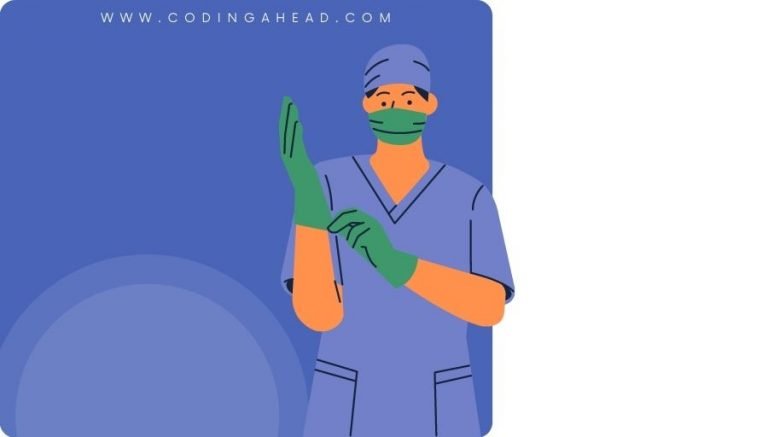How To Use CPT Code 26952
CPT 26952 describes the procedure for amputation of a finger or thumb, including the removal of nerve tissue and the use of local advancement flaps for wound closure. This article will cover the description, official description, procedure, qualifying circumstances, appropriate usage, documentation requirements, billing guidelines, historical information and billing examples.
1. What is CPT Code 26952?
CPT 26952 can be used to describe the surgical procedure for amputation of a finger or thumb, specifically at any joint or phalanx level. This code includes the removal of nerve tissue and the use of local advancement flaps for wound closure. It is important to note that CPT 26952 is used for both primary and secondary amputations, depending on the timing of the procedure in relation to the initial injury or infection.
2. Official Description
The official description of CPT code 26952 is: ‘Amputation, finger or thumb, primary or secondary, any joint or phalanx, single, including neurectomies; with local advancement flaps (V-Y, hood).’ This code specifically refers to the surgical removal of a complete or partial finger or thumb at any joint or phalanx level, along with the removal of nerve tissue. It also includes the use of local advancement flaps, such as V-Y or hood flaps, for wound closure.
3. Procedure
- In this procedure, the healthcare provider performs the amputation of a finger or thumb at any joint or phalanx level.
- The provider begins by making an incision in the skin over the site of interest and dissecting through the subcutaneous tissue.
- Next, the provider detaches the muscles from the bone and ligates the blood vessels.
- The digital nerves are then removed to minimize the chances of neuroma formation after amputation.
- The provider makes a cut in the bone at the level of a joint or phalanx and amputates the bone.
- Finally, the provider performs closure of the wound by locally advancing a flap from an adjacent site. This can be done using V-Y or hood flap closure techniques.
4. Qualifying circumstances
CPT 26952 is performed in cases where the patient has a partially amputated finger or thumb following a traumatic injury. The procedure may be necessary when a previous amputation has failed to heal properly. It is important to note that this procedure should only be performed by a qualified healthcare provider with the appropriate training and expertise in amputation procedures.
5. When to use CPT code 26952
CPT code 26952 should be used when a healthcare provider performs the amputation of a finger or thumb at any joint or phalanx level, along with the removal of nerve tissue. This code is applicable for both primary amputations, which are performed immediately after an acute injury or infection, and secondary amputations, which are performed after a previous amputation has failed to heal properly.
6. Documentation requirements
To support a claim for CPT 26952, the healthcare provider must document the following information:
- Patient’s medical history and indication for the amputation procedure
- Details of the surgical procedure, including the specific joint or phalanx level of amputation
- Description of the nerve tissue removal and the use of local advancement flaps for wound closure
- Date and duration of the procedure
- Any complications or additional procedures performed during the same surgical session
- Signature of the healthcare provider performing the procedure
7. Billing guidelines
When billing for CPT 26952, it is important to ensure that the procedure meets the specific criteria outlined in the code description. The healthcare provider should be qualified and experienced in performing amputation procedures. Additionally, the use of local advancement flaps for wound closure should be documented. It is also important to follow any specific billing guidelines provided by the payer or insurance company.
8. Historical information
CPT 26952 was added to the Current Procedural Terminology system on January 1, 1990. There have been no updates or changes to the code since its addition.
9. Examples
- A surgeon performs the amputation of a finger at the proximal interphalangeal joint level, including neurectomies, and uses a V-Y flap for wound closure.
- A hand specialist performs the secondary amputation of a thumb at the metacarpophalangeal joint level, including neurectomies, and uses a hood flap for wound closure.
- An orthopedic surgeon performs the primary amputation of a finger at the distal interphalangeal joint level, including neurectomies, and uses a V-Y flap for wound closure.
- A plastic surgeon performs the secondary amputation of a thumb at the interphalangeal joint level, including neurectomies, and uses a hood flap for wound closure.
- An attending physician performs the primary amputation of a finger at the metacarpophalangeal joint level, including neurectomies, and uses a V-Y flap for wound closure.
- A hand surgeon performs the secondary amputation of a thumb at the proximal interphalangeal joint level, including neurectomies, and uses a hood flap for wound closure.



